This week’s Q1 national accounts release from the Australian Bureau of Statistics (ABS) revealed that real per capita household consumption has been negative for seven consecutive quarters on an annual basis, down 2.4% from its peak.
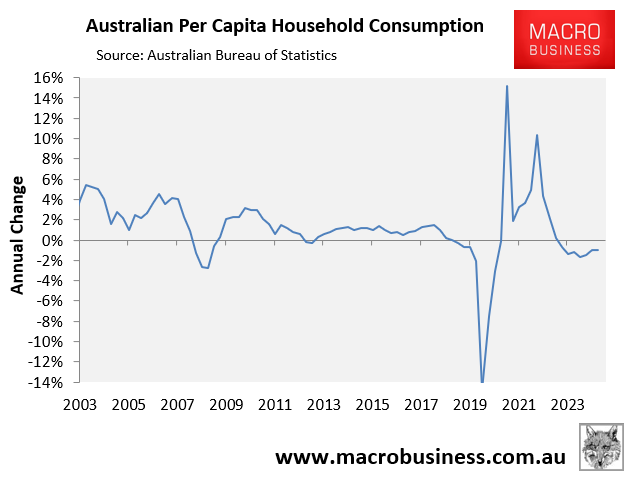
The decline in household consumption came despite a rebound in real per capita household incomes, which jumped by 1.8% in the year to Q1 2025:
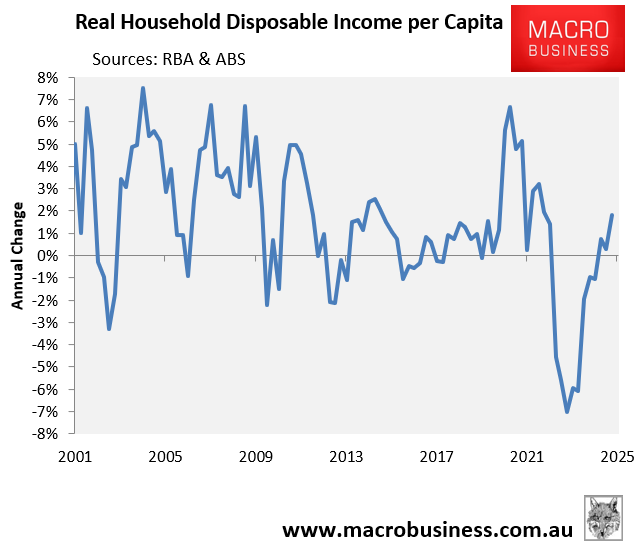
The divergence between income and spending lifted the household savings rate to 5.2% in Q1 2025, up from 2.7% a year earlier and the highest rate since Q3 2022:
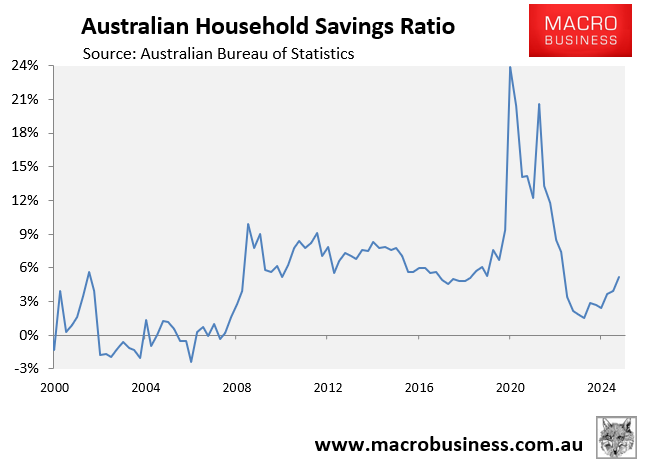
On Thursday, the ABS released its Monthly Household Spending Indicator (MHSI), which rose by only 0.1% over the month and by 3.7% annually, continuing the run of softer consumer spending data in 2025.
The chart presented below by Justin Fabo from Antipodean Macro reinforces that there has been no shift higher in spending momentum:
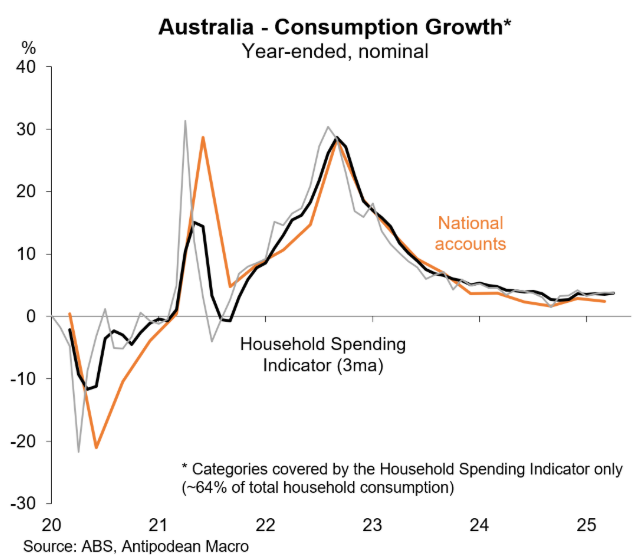
CBA credit and debit card data for May likewise showed no discernible lift in spending in May:
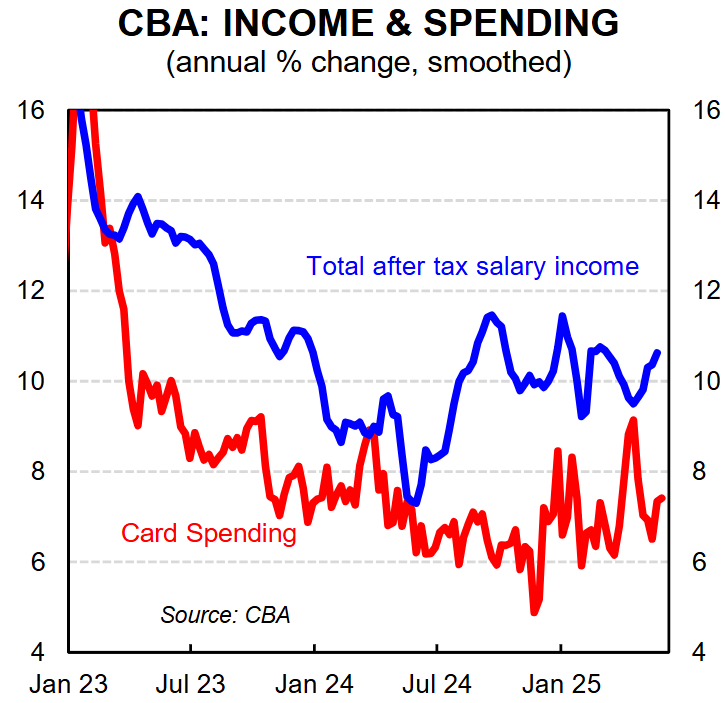
Therefore, the increase in disposable income has so far not translated into spending, with households choosing to save instead.
The ANZ-Roy Morgan weekly consumer confidence survey shows that Australian households remain deeply pessimistic after the biggest income shock on record:
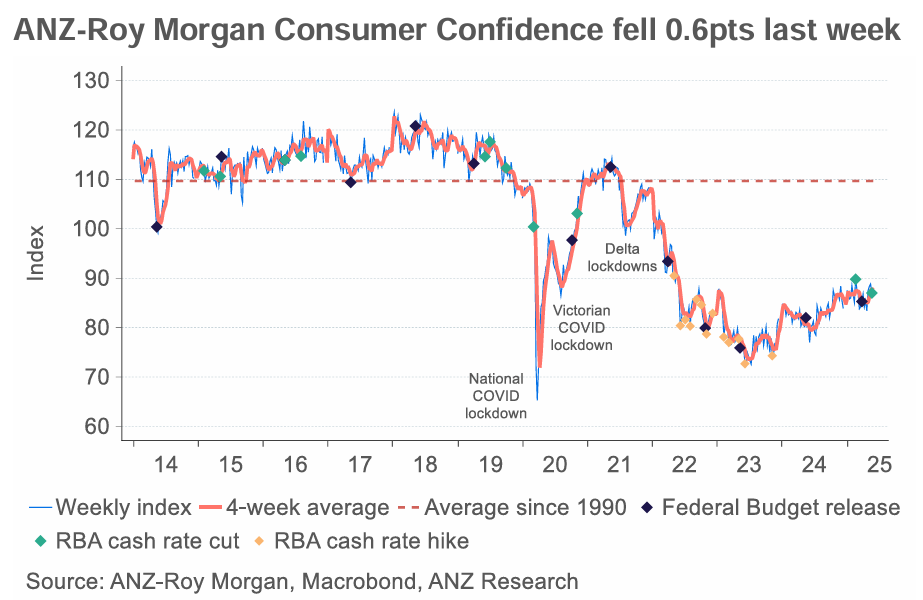
Additional interest rate cuts will obviously free up more disposable income and should stimulate spending. But will it meet the RBA’s expectations?
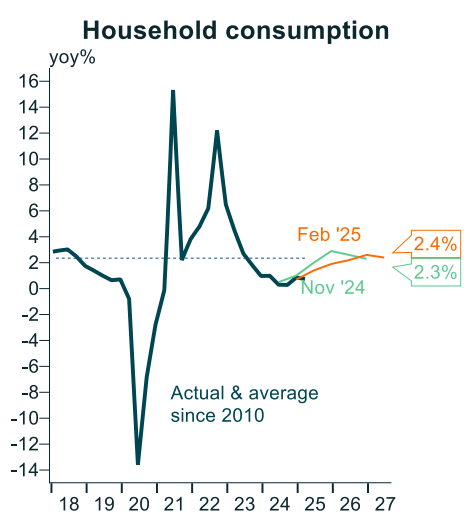
Only time will tell. External events may play a critical role.

